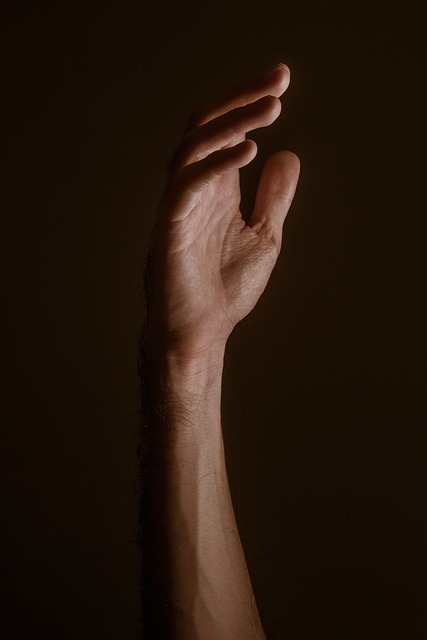The coyote is a symbol often found in various cultures and mythologies. It holds different meanings depending on the context, but commonly represents adaptability, trickery, and transformation.
Table of Contents
The Coyote as a Trickster Figure in Native American Mythology
The coyote is a fascinating creature that holds great significance in Native American mythology. In many tribes, the coyote is seen as a trickster figure, a mischievous and cunning character that often plays pranks on others. This symbolism of the coyote as a trickster can be found in various Native American stories and legends, where the coyote is portrayed as both a hero and a troublemaker.
One of the reasons why the coyote is associated with trickery is its ability to adapt and survive in different environments. The coyote is known for its intelligence and resourcefulness, which allows it to outsmart its prey and predators alike. This cleverness is often reflected in the coyote’s behavior in Native American mythology, where it uses its wit and cunning to outwit other animals or even humans.
In many Native American stories, the coyote is depicted as a character who brings chaos and disorder to the world. It is often portrayed as a troublemaker who disrupts the natural order of things and challenges the authority of other animals or even the gods themselves. The coyote’s mischievous nature is seen as a way to teach important lessons about the consequences of one’s actions and the importance of respecting the natural order.
However, the coyote is not always seen as a negative figure in Native American mythology. In some tribes, the coyote is also revered as a hero and a creator. It is believed that the coyote played a crucial role in the creation of the world and the shaping of human beings. In these stories, the coyote is seen as a wise and powerful being who possesses great knowledge and spiritual insight.
The coyote’s dual nature as both a trickster and a creator reflects the complex and multifaceted nature of life itself. It reminds us that there is both light and darkness in the world, and that we must learn to navigate through both. The coyote’s tricks and pranks serve as a reminder that life is not always straightforward and that we must be adaptable and resilient in the face of challenges.
The symbolism of the coyote as a trickster figure also teaches us about the importance of laughter and humor in our lives. The coyote’s antics and jokes bring joy and laughter to the world, reminding us not to take ourselves too seriously. It encourages us to find humor in difficult situations and to approach life with a lighthearted attitude.
In conclusion, the coyote holds great symbolism as a trickster figure in Native American mythology. Its mischievous and cunning nature serves as a reminder of the complexities of life and the importance of adaptability and resilience. The coyote’s tricks and pranks teach us valuable lessons about the consequences of our actions and the need to respect the natural order. Furthermore, the coyote’s dual nature as both a troublemaker and a creator reflects the balance between light and darkness in the world. Ultimately, the symbolism of the coyote encourages us to find humor and joy in life, reminding us not to take ourselves too seriously.
Exploring the Coyote’s Symbolism in Literature and Folklore

The coyote is a fascinating creature that has captured the imagination of people for centuries. In literature and folklore, the coyote often serves as a symbol for various ideas and concepts. From trickster to teacher, the coyote’s symbolism is rich and diverse.
One of the most common representations of the coyote is as a trickster. In Native American folklore, the coyote is often portrayed as a mischievous and cunning character who uses his wits to outsmart others. This trickster archetype can be found in stories from various tribes, such as the Navajo and the Hopi. The coyote’s ability to navigate through difficult situations with cleverness and resourcefulness has made him a beloved character in these tales.
In addition to being a trickster, the coyote is also seen as a teacher in many Native American stories. The coyote is often depicted as a wise and knowledgeable figure who imparts important lessons to humans. These lessons can range from practical skills, such as hunting and survival techniques, to moral and spiritual teachings. The coyote’s role as a teacher reflects the respect and reverence that many Native American cultures have for the natural world and its wisdom.
Beyond Native American folklore, the coyote’s symbolism can also be found in literature from other cultures. In Western literature, for example, the coyote is often associated with the frontier and the wild, untamed nature of the American West. The coyote’s adaptability and resilience in harsh environments have made it a symbol of survival and endurance. This symbolism is evident in works such as Jack London’s “The Call of the Wild” and Cormac McCarthy’s “Blood Meridian.”
In addition to its role in literature, the coyote’s symbolism can also be seen in popular culture. In cartoons and movies, the coyote is often portrayed as a comical and persistent character who is constantly trying to catch the elusive roadrunner. This portrayal of the coyote as a determined but ultimately unsuccessful predator has become a cultural icon, representing the futility of certain pursuits.
Overall, the symbolism of the coyote is multifaceted and complex. From its role as a trickster and teacher in Native American folklore to its representation of the wild and untamed in Western literature, the coyote embodies a range of ideas and concepts. Whether it is seen as a cunning trickster or a resilient survivor, the coyote’s symbolism continues to captivate and inspire. So, the next time you spot a coyote in the wild or come across its image in a story, take a moment to appreciate the rich symbolism that this remarkable creature represents.
The Coyote as a Symbol of Adaptability and Survival
The coyote, a small and cunning creature, has long been a symbol of adaptability and survival. Found throughout North and Central America, this resourceful animal has managed to thrive in a variety of environments, from deserts to forests. Its ability to adapt to changing circumstances and its remarkable survival skills have made it a fascinating symbol in many cultures.
One of the key characteristics that make the coyote a symbol of adaptability is its diet. Unlike other animals that rely on a specific food source, the coyote is an opportunistic eater. It can consume anything from small rodents and insects to fruits and vegetables. This flexibility allows the coyote to survive in different habitats, even when food sources are scarce. Its ability to adapt its diet to the available resources is a valuable lesson for humans as well, reminding us to be open-minded and adaptable in our own lives.
Another aspect of the coyote’s adaptability lies in its behavior. Coyotes are highly intelligent and have a remarkable ability to learn and adjust their behavior to changing circumstances. They are known for their cunning and resourcefulness, often finding creative solutions to overcome challenges. This adaptability is not only a survival strategy but also a symbol of resilience and the ability to thrive in the face of adversity.
The coyote’s adaptability is also reflected in its physical characteristics. Its slender body, long legs, and keen senses make it an agile and versatile hunter. It can run at high speeds, jump over obstacles, and climb trees when necessary. These physical attributes allow the coyote to navigate different terrains and escape from predators. The coyote’s ability to adapt its physical abilities to its environment is a powerful symbol of resilience and the importance of being flexible in the face of change.
In addition to adaptability, the coyote is also a symbol of survival. Despite being hunted and persecuted by humans, the coyote has managed to survive and even thrive in many areas. Its ability to adapt to human presence and exploit urban environments has allowed it to expand its range and increase its population. This resilience and ability to overcome challenges make the coyote a symbol of survival and the importance of perseverance in the face of adversity.
The coyote’s symbolism as a survivor is not limited to its physical survival but also extends to its ability to adapt to changing cultural and societal landscapes. In Native American folklore, the coyote is often portrayed as a trickster figure, representing adaptability, intelligence, and the ability to navigate complex social dynamics. The coyote’s ability to survive and thrive in different cultural contexts serves as a reminder of the importance of embracing change and finding creative solutions to overcome obstacles.
In conclusion, the coyote’s symbolism as a symbol of adaptability and survival is deeply rooted in its ability to adapt its diet, behavior, and physical characteristics to changing circumstances. Its resourcefulness, resilience, and ability to thrive in different environments make it a fascinating symbol in many cultures. Whether it is adapting its diet to the available resources or adjusting its behavior to overcome challenges, the coyote serves as a reminder of the importance of adaptability and perseverance in our own lives.
Unveiling the Coyote’s Symbolic Meanings in Art and Tattoos
The coyote is a fascinating creature that has captured the imagination of many artists and tattoo enthusiasts. Its symbolism is rich and varied, with different cultures and individuals interpreting it in their own unique ways. In this article, we will delve into the symbolic meanings associated with the coyote in art and tattoos.
One of the most common symbolic meanings of the coyote is its association with trickery and cunning. In Native American folklore, the coyote is often portrayed as a mischievous and clever trickster. It is known for its ability to outsmart its enemies and find creative solutions to problems. This aspect of the coyote’s symbolism is often depicted in art and tattoos, with the creature shown in playful and cunning poses.
Another symbolic meaning of the coyote is its connection to adaptability and survival. The coyote is a highly adaptable creature that can thrive in a variety of environments. It is known for its resourcefulness and ability to find food and shelter even in harsh conditions. This aspect of the coyote’s symbolism is often represented in art and tattoos by showing the creature in different landscapes and situations, highlighting its ability to survive and thrive.
The coyote is also associated with transformation and change. In many Native American cultures, the coyote is seen as a symbol of transformation and the ability to navigate through life’s challenges. It is believed that the coyote can guide individuals through difficult times and help them find their true path. This aspect of the coyote’s symbolism is often depicted in art and tattoos by showing the creature in the midst of a transformation or surrounded by symbols of change.
In addition to its association with trickery, adaptability, and transformation, the coyote is also seen as a symbol of balance and harmony. In some Native American traditions, the coyote is believed to be a mediator between the human world and the spirit world. It is seen as a bridge between different realms, bringing balance and harmony to the universe. This aspect of the coyote’s symbolism is often represented in art and tattoos by showing the creature in a peaceful and serene pose, surrounded by symbols of balance and harmony.
The symbolism of the coyote in art and tattoos is not limited to Native American cultures. In modern tattoo art, the coyote is often depicted as a symbol of freedom and independence. It is seen as a representation of the wild and untamed spirit, a reminder to embrace one’s individuality and live life on one’s own terms. This aspect of the coyote’s symbolism is often portrayed in tattoos by showing the creature in dynamic and energetic poses, symbolizing the pursuit of freedom and self-expression.
In conclusion, the symbolism of the coyote in art and tattoos is multifaceted and rich. From its association with trickery and adaptability to its connection to transformation and balance, the coyote holds a special place in the hearts and minds of many. Whether you choose to incorporate the coyote into your art or tattoo as a symbol of cunning, survival, transformation, or freedom, it is sure to add depth and meaning to your chosen design.
Conclusion
The symbolism of the coyote varies across different cultures and contexts. In Native American traditions, the coyote is often seen as a trickster figure, representing cunning, adaptability, and unpredictability. It can also symbolize transformation, survival, and the balance between light and darkness. In some folklore, the coyote is associated with wisdom, intelligence, and the ability to navigate through life’s challenges. Overall, the symbolism of the coyote is complex and multifaceted, embodying both positive and negative qualities depending on the cultural interpretation.
For licensing reasons, we must provide the following notice: This content was created in part with the help of an AI.


